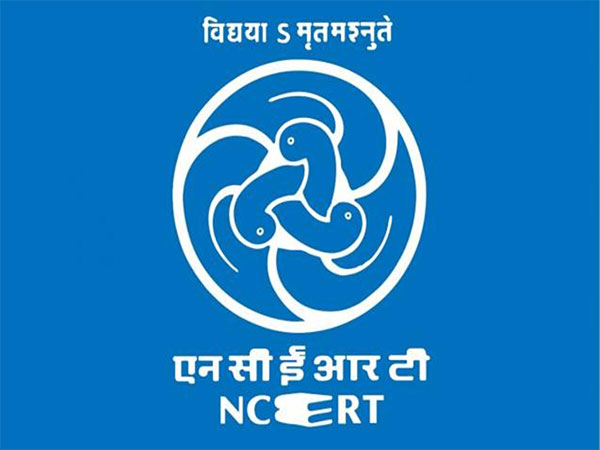By Vishu Adhana
New Delhi (India) July 16 (ANI): Akbar’s reign was a “blend of brutality and tolerance”, while Aurangzeb was a military ruler who banned “un-Islamic” practices and reimposed taxes on non-Muslims — this is how the new NCERT Class 8 Social Science textbook presents key Mughal emperors.
The book, to be introduced in schools from the 2025-26 academic year, marks a shift in tone in its portrayal of the Mughal emperors, offering detailed accounts of conquest, religious decisions, cultural contributions, and brutality.
The NCERT has defended the inclusion of such details, saying: “While those happenings cannot be erased or denied, it would be wrong to hold anyone today responsible for them… Understanding the historical origin of cruel violence, abusive misrule, or misplaced ambitions of power is the best way to heal the past and build a future where, hopefully, they will have no place.”
The chapter, ‘Reshaping India’s Political Map,’ which discusses Indian history from the 13th to the 17th century, spans the rise and fall of the Delhi Sultanate and the resistance to it, the Vijayanagara Empire, the Mughals and the resistance to them, and the rise of the Sikhs.
The book traces the Mughal rise, beginning with Babur, described as “a Turkic Mongol ruler and military strategist,” who defeated Ibrahim Lodi at Panipat in 1526, using gunpowder and field artillery, effectively ending the Delhi Sultanate.
Babur’s son, Humayun, struggled to hold the empire, briefly losing it to Sher Shah Suri.
The book recounts how Hemu, a Hindu general under the Suri regime, briefly ruled Delhi under the title Hemchandra Vikramaditya, before being captured and beheaded by Akbar’s forces after the Second Battle of Panipat.
Akbar, declared emperor at 13 after Humayun’s accidental death, set out to consolidate the subcontinent.
The book describes his rule as a “blend of brutality and tolerance, shaped by ambition and strategy”. During the siege of Chittorgarh in 1568, Akbar ordered the massacre of some 30,000 civilians and the enslavement of surviving women and children. It quotes from his own victory dispatch:
“We have succeeded in occupying a number of forts and towns belonging to the infidels and have established Islam there… With the help of our bloodthirsty sword, we have erased the signs of infidelity from their minds and have destroyed temples in those places and also all over Hindustan.”
Alongside military campaigns, Akbar abolished the jizya, welcomed Rajput nobles to his court, and promoted sulh-i-kul – or “peace with all”. He established a translation bureau at Fatehpur Sikri and commissioned the Persian translations of the Mahabharata (Razmnama), Ramayana, Bhagavad Gita, and Panchatantra.
His spiritual and political evolution is captured in a quote recorded by his biographer Abul Fazl: “Formerly I persecuted men into conformity with my faith and deemed it Islam. As I grew in knowledge, I was overwhelmed with shame. Not being a Muslim myself, it was unmeet to force others to become such.”
His successors, Jahangir and Shah Jahan, are noted for their patronage of art and architecture, with Shah Jahan remembered for building the Taj Mahal. But the book does not skip over political violence: it details the succession battles following Shah Jahan’s illness, in which Aurangzeb defeated his brother Dara Shikoh, executed rivals, and imprisoned his father.
Aurangzeb’s reign is described as the Mughal Empire’s period of greatest territorial expansion, though marred by constant warfare. His religious orthodoxy and policies, the book states, shaped the tone of his rule:
“He gradually banned practices he regarded as un-Islamic, such as music and dance in his court, and reimposed the jizya tax on non-Muslims as well as a pilgrimage tax on Hindus travelling to their sacred places (both of which had been abolished by Akbar).”
It details temple destructions in Banaras, Mathura, and Somnath, and persecution of Jain, Sikh, Sufi, and Parsi communities.
The revised textbook includes a preface directly addressing why such dark episodes have been retained:
“History sometimes seems to be full of wars and destruction… Should we omit them entirely? … The best approach is to face them and analyse them so as to understand what made such developments possible — and, hopefully, help avoid their recurrence in future.”
“It is important to study those darker developments dispassionately, without blaming anyone living today for them… The past continues to live with us and shapes the present.” (ANI)
Disclaimer: This story is auto-generated from a syndicated feed of ANI; only the image & headline may have been reworked by News Services Division of World News Network Inc Ltd and Palghar News and Pune News and World News
HINDI, MARATHI, GUJARATI, TAMIL, TELUGU, BENGALI, KANNADA, ORIYA, PUNJABI, URDU, MALAYALAM
For more details and packages













